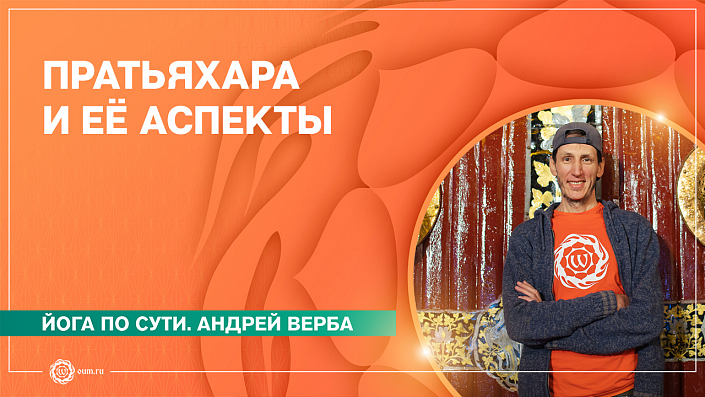V Eastern spiritual religions have such a concept as “pure vision”. What does it mean? This means seeing things as they are, without projecting your inner karmic seals, past experiences, and so on. And here the question arises: who sees and what, in fact, sees. Here we are confronted with concepts such as subject and object. What are subject and object?
The object and the subject are inextricably linked with each other by the process of perception. The subject is the perceiver, that is, the one in whose consciousness reality is reflected. And the object is what is reflected. Metaphorically speaking, we can say that the subject is a mirror, and the object is what is reflected in this mirror. The difference here is that the mirror, one might say, just has that very clear vision and reflects the object as it is. The same cannot be said about human consciousness.
A person’s consciousness is far from a mirror: it is often clouded with karmic seals, through the prism of which a person sees the world around him. And some philosophers agree that the difference between subject and object is very relative. After all, if there is no subject, in fact there is no object. In quantum physics, scientists have already concluded that a particle behaves differently depending on the presence or absence of an observer. That is, the subject affects the object and vice versa. Seeing an object, the subject also reacts in accordance with his perception.
Many Eastern philosophers talk about the illusory nature of the world. This idea is reflected in the teachings of Advaita Vedanta and in Buddhism. And quantum physics claims that the world is made of emptiness. Why is it considered that the world is illusory? No matter how much you think about emptiness, things remain in their places, so is there any point, like a mantra, to repeat “Everything is an illusion”?
The question of the illusory nature of the world can be viewed from several points of view. First, from the point of view of the impermanence of phenomena. We can say that the world is illusory because it is impermanent – no phenomenon can be “preserved” in its current state. Already, while you are reading these lines, something has changed in the world, in which, by and large, everything is in the process of destruction. This is the cycle of being: destruction-creation, destruction-creation, and so on. That is why Buddha said that life is filled with suffering, because everything is changeable. Therefore, the beauty of a flower is to some extent illusory, because it is impermanent.
On the other hand, the world is illusory because everything that we see, by and large, is only in our consciousness. And if we dive deeply into the question of the relationship between subject and object, then we can come to very interesting conclusions, after which the solid ground of our beliefs about the reality of the world can survive a not weak earthquake.
For example, let’s try to figure out where we are? Yes, you can name a house, street, city, country, planet Earth. Where is the planet itself? Okay, in the Galaxy. Where is the Galaxy? You can cite many more scientific terms – the Universe and so on, but as a result, we will come to the concept about which it will not be possible to say that it exists anywhere except … our own consciousness. That is, the Universe exists only in our consciousness – the object is in the consciousness of the subject. And where can the line be drawn in this case between the object and the subject, if the perceiver and the perceived are one and the same.
What are subject and object? From a material point of view, these things are not related. There is the consciousness of the subject, which reflects an object independent of him. But this version does not stand up to criticism. After all, the perception of an object is primarily due to the state of the subject. If two people look at the same apple, then everyone will have their own perception of this apple. And it turns out that in the end we have two different apples.
One will think that the apple is sour (simply because once he came across a sour green apple, and now it seems to him that by default all green apples are sour), and the other will consider the apple sweet (because he once ate green apple, and it was sweet), one will consider the apple large enough to be full, and the other small enough (and this is a difference simply because one is full at the moment, and the other is hungry), and the list goes on and on. At the same time, to say that two people see the same apple is only conditional.
The subject-object dichotomy is one of the delusions that leads us into the illusion that reality exists independently of us. But is it really so? As we have already found out, two people contemplating the same object can see completely different phenomena. So what is object and subject? Who is primary? What are the differences between them? Why can the perception of the same object differ?
Speaking about the subjective-object dichotomy, we can mention such a concept of Buddhism as “shunyata”, namely emptiness. Some people mistakenly perceive this concept as a statement that there is nothing at all. No, things exist, but they are empty. How can this be? It’s simple: under emptiness we mean the absence of an independent, independent and permanent nature in things and phenomena. That is, in this case, we are talking about the fact that the subject and the object are connected. Everything that happens occurs due to conditions. This is emptiness.
Therefore, the distinction between subject and object is very conditional. After all, if there is no first, then we can say that there is no second. If only for the simple reason that the perception of the same object in the eyes of different observers may differ. And this means that in any phenomenon, the person who observes this phenomenon is primary.
In fact, in the matter of understanding the world, the relationship between the subject and the object is a very important line, because if we perceive the objects around us as something existing independently of us, we begin to think that reality exists independently of us, and this means that we have no leverage to influence it. But it is not so.
Experiments in the field of quantum physics show that a particle is dependent on an observer not only because each observer perceives this particle in his own way, but because the very process of observing a particle affects this particle. That is, here we are talking about the materiality of such a seemingly intangible phenomenon as thought.
So what is pure vision? Pure vision is precisely the perception of objects and phenomena as empty, that is, they do not have an independent nature. It is important not to fall into some kind of extreme nihilism or solipsism, arguing that everything that happens is a dream, an illusion and nothing at all exists. In the east, teachers very simply bring to their senses such students who have fallen into such a state – they are simply beaten with a stick and asked, they say, where does the pain come from, if everything is an illusion?
Things do exist, but they do not exist by themselves. That is why one Christian Saint said: “Save yourself – and thousands will be saved around you.” If we change our consciousness, then the things that are reflected in this consciousness begin to change. A metaphor that is difficult to understand from the point of view of the material world, but which very well reflects the process of changing the world through a change in consciousness: if there is a rotten apple in front of the mirror, then the mirror reflects a rotten apple.
But if suddenly the mirror begins to reflect a fresh apple, reality will have to obey – and the apple will become fresh. And, perhaps, the problem of the seeming illogicality of such an idea is only that no one has yet learned to create a reflection of a fresh one in front of a rotten apple. But in the case of our consciousness, this is quite possible: we change ourselves – the world around us is changing.
You can argue for a long time about what is primary: the subject or the object. Probably, these are two parts of one whole. And reality depends on what we direct our attention to. And our activity to change the world begins in our minds. Thought is the beginning of everything. This is the first thing to understand.
In addition to the philosophical understanding of the relationship between subject and object, there are also quite practical and mundane concepts. So, for example, in the criminal code there are the concepts of “subject” and “object of the crime.” The subject is the one who commits this crime and bears responsibility for the committed. Object – a victim to whom a socially dangerous act is directed.
In economics, a subject is a private trader in economic relations; in psychology, a subject means our perceiving consciousness, our “I”, which cognizes the world. In logic, a subject is a kind of judgment against which logical conclusions are made in order to prove or refute this judgment.
There is also such a concept as a “subject of law” – that person who is able to exercise rights and obligations. Well, in philosophy, as we have already found out, the subject is the cognizing, perceiving, acting. The object, in turn, is the entire surrounding world, to which the process of cognition is directed.
So what have we found out? Subject and object are two parts of the process of cognition and perception. The subject is the consciousness in which the surrounding world is reflected, and the object is what is reflected. The object and the subject are so connected that the bearer of the conscious principle is to some extent the creator of the surrounding world. By and large, reality only exists when the perceiver appears. Therefore, the process of knowing reality is rather a process of its creation in one’s consciousness. And the quality of the world surrounding the subject depends on the quality of perception of the subject himself.
From the point of view of Advaita Vedanta, everything that we see is only a form of consciousness. That is, from this point of view, everything is both an object and a subject. It may sound strange, but to some extent, not only we are the subject who sees the apple, but the apple, in turn, is the subject who sees us. At least, such a perception of reality is offered by Advaita Vedanta, from the point of view of which there was originally only pure consciousness, which began to take various forms, and in the process the material world was formed. This, of course, is just a version, but the fact that the perceiver and the perceived are connected is quite obvious.







